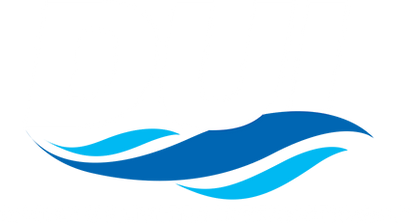|
Q. When / where did you start diving?
A. Experimenting with diving in the late 1980’s, I later began formal recreational diving training in 1991 near Joplin, Missouri.
Q. What motivated you to become a diver?
A. Growing up, I’d always been very comfortable in the water and enjoyed staying/swimming underwater most. My younger years were occupied more with other sports and things so it wasn’t until 1991 that I took recreational diving classes organized by my friend, Scott Arner, in a local area lead/zinc mine. Technically motivated, training progressed and within a year I started cave diver training followed quickly by Trimix training. At this point, Scott Arner and I started an underwater recovery team and began conducting underwater equipment and body recoveries in the four state (Missouri, Arkansas, Kansas, and Oklahoma) area lakes, rivers, and flooded mines. In 1994, I moved to south central Missouri, leaving the recovery team, before I was contacted by a University of Missouri-Rolla geological engineering student, Andrew Hentges. Andy had acquired a research permit for a deep underwater cave in our area and was looking for cave divers who were also trimix qualified. A small team was assembled and the exploration began, leaving off from prior explorations in the early 1970’s by Sheck Exley and then in 1978 by Roger Miller and Frank Fogarty. Unfortunately, the project was cut short due to Andy’s death in an automobile accident and the initial team fragmented. Understanding the increased safety, efficiency, and effectiveness of team oriented exploration, I continued where Andy left off and began technical level instructor training. Directing focus more on quality than quantity, I began training up a new team and, with a lot of help from George Irvine, old dive partner Steve Gridley, and a new dive partner Tom O’Connor, slowly developed standard operating procedures, equipment, and a team (Ozark Cave Diving Alliance) of committed explorers to conduct exploratory dives in the Ozark region.
Q. Where have you been?
A. Florida caves and Wrecks, Mexico caves and reefs, Missouri/Arkansas/Oklahoma caves and mines, Turks and Caicos and various shores.
Q. What dive related accomplishments are you most proud of?
A. Undoubtedly, the formation of the Ozark Cave Diving Alliance, a non profit research/exploration team. Officially formed in 1998, the OCDA has made a huge impact on diving safety and procedural practices, especially within the technical community, in the central United States. When visibility is low, you’re cold, deep, and in some cave miles from home, these are the individuals I count on and who I’m most proud to be associated.
Q. What will the sport of diving be like 20 years from now?
A. I’m guessing equipment will be more streamlined, lighter, and more efficient. The diver will likely be similar though; from those who dive with what they found in a yard sale and/or heard from a trained/equipped diver. The old analogy, “The more things change, the more they stay the same” may apply here"
Q. Who do you admire in the diving community?
A. So many people to mention. Of course, my own team mates with the OCDA. From sidemount to sump diving (which is arguably the most challenging) to the more rare ‘good vis’ dives, these guys are some of the most committed people I know. Serious professionals. Dedicated and committed teams rank highest to me which is why I’m not mentioning individual names here. With few exceptions, notable diving related accomplishments, from equipment manufacturing to successful extreme exposures, have been the result of a team effort (having known it or not) and it’s these teams, and the dedicated people in them, I admire most.
Q. Do you have any pre-dive, dive, or deco rituals?
A. I’m very thorough with equipment inspection and testing well in advance of a dive. Testing regulators, burn testing lights and scooters, testing suit heating devices and back up lighting, and confirming gas analysis/pressure for all tanks. Sam for mission objectives and planning - anticipated bottom times, resulting decompression duration, gas shifts, gas and propulsion requirements, etc. I/we like to arrive at the dive site prepared, properly equipped, and ready to go. Not a time to be fixing equipment or figuring decompression gases at this point. My team partners and I discuss upcoming dives over the phone almost every day prior, just to make sure we’re on the same page. As may be expected, our dives ultimately turn out to be far more productive and hassle free. I realized a long time ago that doing this (getting everything right well before the dive) allows more focus on the dive itself thereby maximizing enjoyment, effectiveness, and efficiency.
Q. Do you have any advice for a new drysuit diver?
A. First of all, get a drysuit. I wasted far too much time trying to make a wetsuit work. In retrospect, ignorance and flawed priorities had me staying wet (and cold) for years. My personal favorite is the DUI TLS350. Light, flexible, and durable for even the most extreme dives. After acquiring your new suit, get some shallow time with it, maybe even in the company of an instructor, to become familiar with the way it will affect your diving. Undersuit options, operational control, and emergency procedures should all be addressed thoroughly. Get all that worked out and I honestly believe diving with a drysuit in all but the most temperate conditions will greatly increase diving comfort and safety
Q. Where can people find out more about you, your courses, and products?
A. Check out padi.com, cambrianfoundation.org and sportdiver.com. You can also find my column, Diversed in Sport Diver.
|
 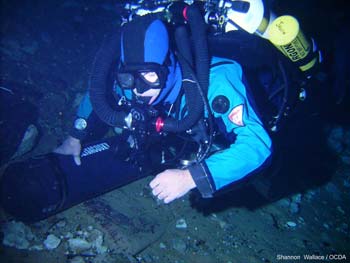 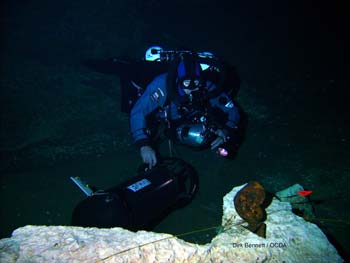 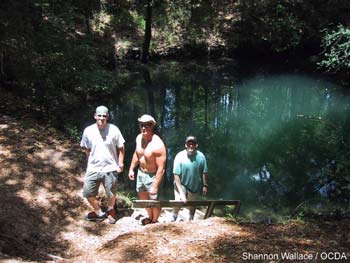 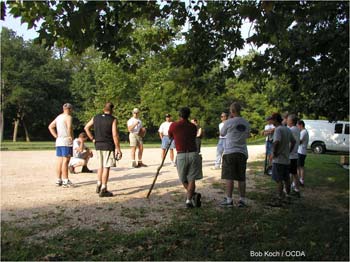 
|







